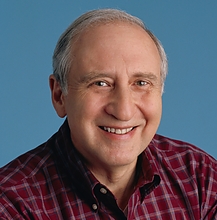 Ben Shneiderman, a Distinguished University Professor of computer science with an appointment in the University of Maryland Institute for Advanced Computer Studies (UMIACS), is being recognized by Stony Brook University for his pioneering work in computer science and human-computer interaction.
Ben Shneiderman, a Distinguished University Professor of computer science with an appointment in the University of Maryland Institute for Advanced Computer Studies (UMIACS), is being recognized by Stony Brook University for his pioneering work in computer science and human-computer interaction.
Shneiderman will receive an honorary doctorate of science degree from Stony Brook, located on Long Island in New York, at their prestigious doctoral hooding ceremony on May 21. He will also speak at the 1 p.m. ceremony.
Shneiderman earned a Master of Science degree from Stony Brook in 1972. A year later, in 1973, he was awarded the university’s first Ph.D. in computer science.
A letter from Stony Brook President Samuel L. Stanley Jr., M.D., said that Shneiderman is being honored for his “profound impact” on the development of the field of computer science.
“Ben Shneiderman is widely regarded as one of the founders of the field of human-computer interaction,” adds Arie Kaufman, a Distinguished Professor and chair of computer science at Stony Brook. “His research and scholarship continues to influence many others, both established experts in the field as well as the next generation of HCI and information visualization researchers.”
Shneiderman came to the University of Maryland in 1976. In 1983, he became founding director of the university’s Human-Computer Interaction Lab. His early work in treemaps—a method of visually displaying complex sets of data using rectangular shapes—led to hundreds of papers that refined and applied his basic idea.
Much of Shneiderman’s research has focused on finding the most efficient and user-friendly strategies for humans to use computers, particularly in making them more visually and graphically appealing.
Shneiderman credits much of his productivity and impact to his students, and a more than 25-year collaboration with UMIACS Senior Research Scientist Catherine Plaisant. He continues to advance discoveries with his more-recent work in electronic health records, network visualization and science policy.
“We’re continuing to do research on electronic health records to analyze patterns of treatments and outcome,” he says.
Shneiderman has written or co-written 17 books and more than 400 scholarly articles. He gives nearly 40 talks and lectures a year and is on the advisory board of eight scholarly journals.
Shneiderman says he is particularly pleased to receive an honorary doctorate from Stony Brook, not only because it is his alma mater, but because of the university’s strong research and educational programs in computer science and computer visualization.
“It’s very satisfying to be getting this recognition from such a prominent institution,” he says.
For a video overview of Shneiderman's contributions to the field of human-computer interaction, go here.
May 27 update: To read a transcript of Shneiderman’s comments to Stony Brook graduates, go here.